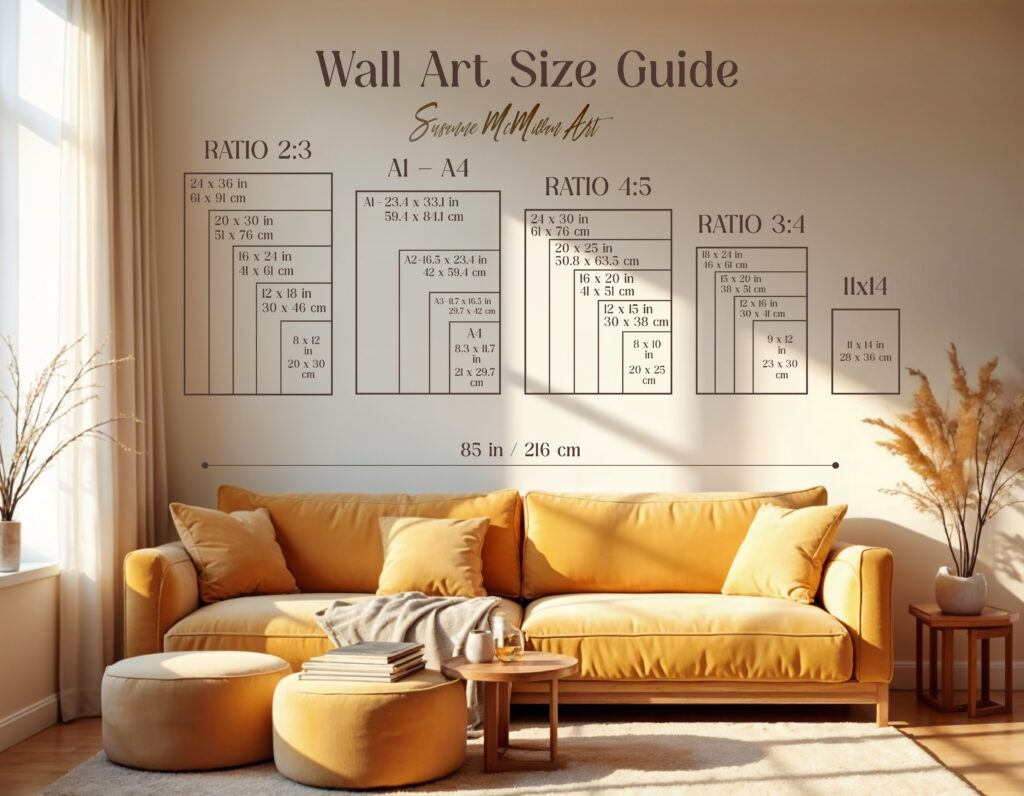Choosing the right size of artwork depends on the wall space and furniture placement. Here’s a guide to help you decide:

1. General Sizing Guidelines
- Large walls: Use oversized artwork (at least 30–40 inches wide) or create a gallery wall.
- Small walls: Choose medium to small artwork (10–24 inches wide) to avoid overwhelming the space.
- Above furniture: Artwork should be about ⅔ to ¾ the width of the furniture below it.
2. Artwork Placement & Proportions
- Above a sofa or bed: Choose a piece 50–75% the width of the furniture (e.g., a 60-inch sofa pairs well with a 36–45 inch-wide artwork).
- Over a fireplace: The artwork should not be wider than the mantel—typically around 2/3 the mantel width.
- Hallways or narrow spaces: Opt for vertical or long horizontal pieces.
- Gallery walls: Mix small and medium-sized pieces (start with a focal piece around 24–36 inches and build around it).
3. Multi-Piece Arrangements
- Diptychs & Triptychs: A set of two or three artworks creates a cohesive look for larger walls.
- Grid or asymmetrical gallery walls: Works best for showcasing multiple small-to-medium pieces.
4. Eye-Level Hanging Rule
- The center of the artwork should be 57–60 inches from the floor for optimal viewing.
5. Room Function Matters
- Living rooms & dining areas: These are great for statement pieces that spark conversation.
- Bedrooms: Choose calming or personal art; mid-sized or horizontal pieces work well above headboards.
- Offices or entryways: Consider art that reflects your personality or sets a welcoming tone—vertical pieces often work well in these narrower areas.
6. Orientation Tips
- Horizontal (landscape) art: Works well over wide furniture like sofas, beds, or credenzas.
- Vertical (portrait) art: Ideal for narrow walls, entryways, or to visually elevate ceiling height.
7. Consider Visual Weight
- A visually “heavy” piece (dark, bold, or high-contrast) can feel larger than it is. Balance it with surrounding decor so it doesn’t overpower the space.
- Light, airy pieces may appear smaller and work well in tighter or minimalist spaces.
8. Spacing Between Multiple Pieces
- When hanging multiple artworks together (like in a grid or gallery wall), aim for 2–3 inches of space between frames. Too much or too little space can disrupt the visual flow.
✅ Quick Tip: Before hanging, lay your art on the floor and test different layouts. Painter’s tape can help you visualize placement on the wall without making holes.
